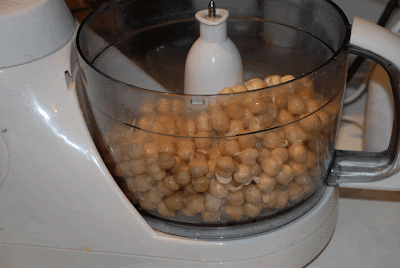We recently received a letter from the Victorian Electoral Commission who wanted to know who was enrolled to vote at our house. We weren't on the list while the previous owner still was. That's OK, I thought…according to the instructions we just cross off her name and put our names down … but for some reason (and I don't usually do this…I think I was just waiting for something to defrost) I continued to read the fine print.
So the full paragraph actually reads:
If there are people listed who are no longer living permanently at this address, please cross their names out and write in their new address if you know it. Note: This information will only be used by the VEC to invite the person to update their enrolment. If you cannot provide a new address, we must send two letters to this address to inform them that they are being removed from the roll.
So the electoral commission is going to mail not one, but two letters to the address of someone who actually doesn't live there anymore. Is there something wrong with this picture, am I missing something fundamental?
Since enrolling to vote is compulsory here in Australia, how many wasted letters are mailed out every day? In these days when governments at all levels are trying to jump on the sustainable bandwagon (with more or less success) surely there is a more sustainable way to deal with this issue. At the very least, if a letter really needs to be sent, surely one would be sufficient?
So the full paragraph actually reads:
If there are people listed who are no longer living permanently at this address, please cross their names out and write in their new address if you know it. Note: This information will only be used by the VEC to invite the person to update their enrolment. If you cannot provide a new address, we must send two letters to this address to inform them that they are being removed from the roll.
So the electoral commission is going to mail not one, but two letters to the address of someone who actually doesn't live there anymore. Is there something wrong with this picture, am I missing something fundamental?
Since enrolling to vote is compulsory here in Australia, how many wasted letters are mailed out every day? In these days when governments at all levels are trying to jump on the sustainable bandwagon (with more or less success) surely there is a more sustainable way to deal with this issue. At the very least, if a letter really needs to be sent, surely one would be sufficient?
Can anyone help me understand what I'm missing?
On another, not entirely unrelated note, I recently discovered that one of my favourite authors, the late great Douglas Adams actually wrote the script for a computer game that was released in 1987:

As the main character, you must deal with a long and complicated series of bureaucratic hurdles resulting from a recent change of address. Your mail isn't being delivered, you can't access bank accounts and nothing is as it should be. The game includes a measure of simulated blood pressure which rises when "frustrating" events happen and lowers after a period of no annoying events. Once a certain blood pressure level is reached, and in typical Douglas Adam's fashion, the player suffers an aneurysm and the game ends.
Douglas Adams was known for his comic science fiction writing ... sometimes though he could strike very close to the truth!




















































